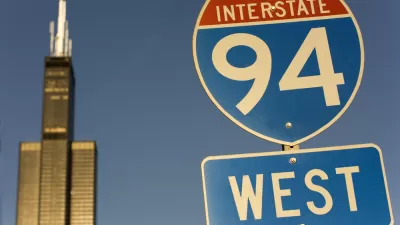Chicago has its first “comprehensive plan” since the 1960s, but without a land use map, the “We Will Chicago” plan is devoted more to laying out the issues and challenges facing the city than setting new policies.

The Chicago Plan Commission unanimously approved the “We Will Chicago” plan on February 16, marking the city’s first comprehensive planning effort since the 1960s. The document is not as robust as traditional comprehensive plans, however, and is described by the Chicago Plan Commission as a “framework plan.”
David Roeder broke the news of the new plan for the Chicago Sun-Times, describing some of the features of the new plan while also noting the document’s limitations. So, for example, the plan “follows overarching themes of equity and resilience and seeks to address discriminatory practices of the past that harmed largely minority neighborhoods and pushed some middle-class residents out of Chicago.”
“The plan highlights data showing the impact of redlining in mortgage loans, the differences in wealth and health across neighborhoods and the preponderance of pollution in poor areas, among other measurements that distinguish the haves from the have-nots,” adds Roeder.
In all, the plan speaks to eight “pillars”: 1) arts and culture; 2) civic and community engagement; 3) economic development; 4) environment, climate and energy; 5) housing and neighborhoods; 6) lifelong learning; 7) public health and safety; and 8) transportation and infrastructure. A land use map, found in the typical comprehensive plan, is not included.
Chicago Mayor Lori Lightfoot championed the plan, according to Roeder, and the commission adopts the document during a hotly contested mayoral election. Members of the Chicago Plan Commission caution that the framework will leave questions of specific policymaking and implementation to future administrations.
FULL STORY: ‘We Will Chicago’ plan adopted to guide city’s next decade

Maui's Vacation Rental Debate Turns Ugly
Verbal attacks, misinformation campaigns and fistfights plague a high-stakes debate to convert thousands of vacation rentals into long-term housing.

Planetizen Federal Action Tracker
A weekly monitor of how Trump’s orders and actions are impacting planners and planning in America.

In Urban Planning, AI Prompting Could be the New Design Thinking
Creativity has long been key to great urban design. What if we see AI as our new creative partner?

King County Supportive Housing Program Offers Hope for Unhoused Residents
The county is taking a ‘Housing First’ approach that prioritizes getting people into housing, then offering wraparound supportive services.

Researchers Use AI to Get Clearer Picture of US Housing
Analysts are using artificial intelligence to supercharge their research by allowing them to comb through data faster. Though these AI tools can be error prone, they save time and housing researchers are optimistic about the future.

Making Shared Micromobility More Inclusive
Cities and shared mobility system operators can do more to include people with disabilities in planning and operations, per a new report.
Urban Design for Planners 1: Software Tools
This six-course series explores essential urban design concepts using open source software and equips planners with the tools they need to participate fully in the urban design process.
Planning for Universal Design
Learn the tools for implementing Universal Design in planning regulations.
planning NEXT
Appalachian Highlands Housing Partners
Mpact (founded as Rail~Volution)
City of Camden Redevelopment Agency
City of Astoria
City of Portland
City of Laramie





























